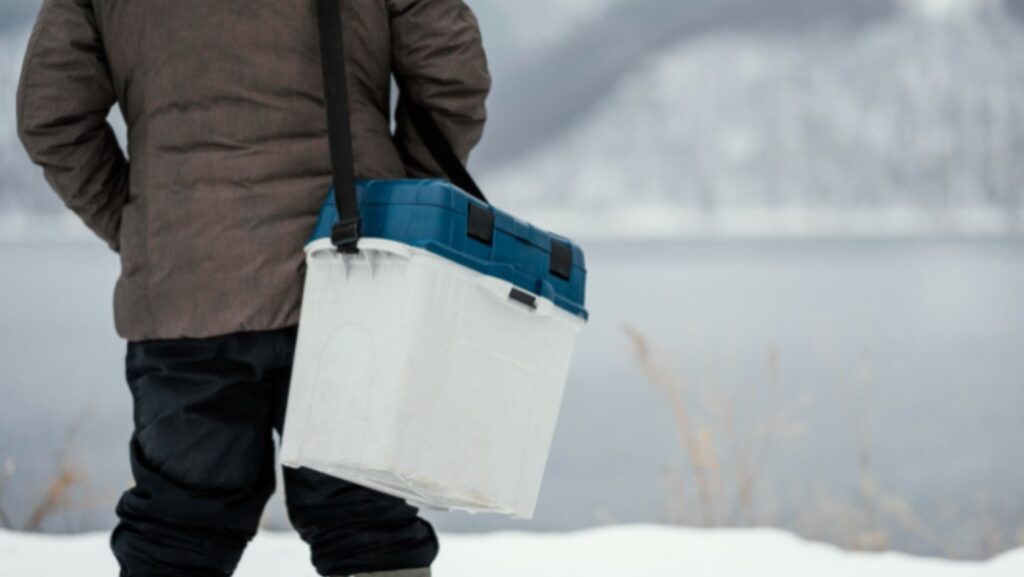Have you ever reached into your cooler during a camping trip only to find warm drinks and soggy food?
That kind of frustration can turn an adventure into a chore very quickly. Now, picture this instead: crisp, fresh beverages, meals, and a camping fridge operating on solar power that hums gently.
No noisy generators to contend with, no worrying about battery life, and no melting ice to deal with. If you are into off-grid travel and camping, solar power can become an eco-friendly, off-grid camper’s best friend, keeping your food chilled even in the camping fridge, no matter how far you are.
But where do you start? What items do you need? Most importantly, how do you keep your refrigerator running on cloudy days and during the cool of the night?
This article has everything you need, from understanding power requirements to setting up your solar system. Keep reading to know everything about solar power and refrigeration.
1. Understand Your Camping Fridge’s Power Needs
Before purchasing solar panels and batteries, you need to determine the power consumption of your camping fridge. These fridges come in various sizes and configurations, and their energy demands can vary widely.
A small 30–40L fridge may use around 1 amp per hour, while a dual-zone 80L unit could draw closer to 4–5 amps, especially during hotter days.
In addition to the factors already mentioned, the power consumption also depends on the quality of the fridge’s insulation, ambient temperature, temporal ambient temperature, lid openings, and the efficiency of the fridge’s compressor.
Understanding the average amp draw per hour during the fridge’s operational and rest cycle helps you estimate the daily consumption in amp-hours (Ah). For example, a fridge provides an average of 2 amps. If it consumes 12 amps per day, it would consume up to 24 amps.
This is the fundamental knowledge needed to set up solar panels. Understanding average daily consumption directly helps you to calculate the battery and solar panel size in your setup.
However, campers should keep in mind that improper estimations might result in the fridge shutting down at night and on cloudy days.
2. Choose the Right Solar Panel Setup
After understanding your energy consumption, the next step is deciding on the best-fitting solar panel configuration. There are solar panels in the market ranging from the compact 50W solar panels to larger 200W units.
Knowing what is best for you would require you to multiply your daily amp-hour needs by your battery voltage, which is typically 12V. This will give you the total watt-hours.

As an example, if your fridge requires a daily 24Ah, it would translate to approximately 288Wh (24Ah×12V). Solar panels in an ideal situation would need to cover 125-130% of the demand to compensate for losses and having not optimal sun exposure.
Portable solar units, especially the folding ones, are ideal for campers. They are lightweight, simple to use, and can be moved multiple times during the day to improve sunlight absorption.
Remember that solar panels can only provide optimal energy production if sunlight is the only source of energy available to them. Solar panels are not efficient in shaded campsites or when the weather is cloudy. So when selecting your panel, always add a safety margin for optimal performance.
3. Invest in a Deep-Cycle Battery
For optimal solar energy collection, solar panels must be combined with a battery, which stores energy for use during periods of low sunlight. A deep-cycle battery is perfect for operating appliances such as refrigerators, as it is built to run with sustained energy output over an extended period.
In contrast to starter batteries, which provide a quick surge of energy, deep-cycle batteries can be cycled through discharge and recharge multiple times without sustaining any damage.
The varieties of batteries include AGM, gel, and lithium. Lithium batteries, although expensive, are lighter, have a longer life cycle and provide higher usable capacity. Such an expense can be a worthwhile investment for campers, enhancing reliability and performance during trips.
The battery must provide enough juice to power the fridge through the night. Using the earlier example of 24Ah per day, a 100Ah battery would give you multiple days of reserve power, especially if you don’t drain it below 50% (as recommended for AGM and gel types).
Pairing this with solar ensures your battery stays topped up even during moderate sun exposure.
4. Use a Quality Solar Charge Controller
A solar charge controller is the unsung hero of your solar setup. Its main job is to regulate the voltage and current from the solar panel to the battery, preventing overcharging and potential damage.
Without it, your battery could overheat, swell, or fail prematurely—none of which is good news when you’re miles from the nearest store. There are two main types: PWM (Pulse Width Modulation) and MPPT (Maximum Power Point Tracking).
MPPT controllers are more efficient, especially in variable sunlight, and can boost your system’s output by up to 30%. While they’re pricier than PWM controllers, the added efficiency and battery protection make them a smart investment.
Be sure to choose a charge controller rated appropriately for your panel and battery setup. The additional functions available on many modern units include a digital display or a connection through Bluetooth so you can keep track of battery levels, solar, and power use in real-time.
5. Optimize Energy Usage While Camping
Even with the best solar gear, smart energy management goes a long way. Start by placing your camping fridge in a shaded, well-ventilated spot.
Keeping it out of direct sunlight reduces how hard the compressor needs to work, which lowers power consumption. Insulate the fridge with a thermal cover if available—it helps retain cold air and minimizes cycling.
Open the fridge only when necessary, and try to pre-chill items before placing them inside. Hot food makes the refrigerator consume extra power to achieve and maintain the set temperature.

Also, avoid setting the thermostat colder than needed—keeping it at 35–40°F is usually sufficient for food safety. If your fridge has eco or low-power modes, use them when you’re away from camp or overnight.
And always monitor battery voltage. If it drops below safe levels, it may be time to reduce energy use or run the vehicle’s alternator briefly to give the battery a boost. These small habits can significantly extend your power reserve and keep your fridge running smoothly.
Conclusion
The right setup lets you have cold drinks and fresh food wherever your adventure leads you, no ice, no noise, no worries.
By understanding your fridge’s power needs, choosing efficient solar panels, using a quality deep-cycle battery, and managing your energy wisely, you’re in full control of your off-grid experience.
It’s all about smart planning and a few key investments that pay off every time you camp. You’ve got everything you need to camp smarter and cooler than ever before!


